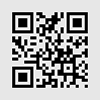
9
XENYX X1222USB User Manual
VOICE CANCELLER
Here, you have a filter circuitry that lets you almost entirely remove the
vocal portion of a recording. The filter is constructed in such a way that voice
frequencies are targeted without majorly affecting the rest of the signal.
Additionally, the filter seizes only the middle of the stereo image, exactly there
where the vocals are typically located.
Possible applications for the Voice Canceller are obvious: you can very simply
stage background music for Karaoke events. Of course, you can also do this at
home or at your rehearsal room before you hit the stage. Singers with their own
band can practice singing difficult parts using a complete playback from a tape
player or a CD, thus minimizing rehearsal time.
STANDBY
If the STANDBY switch is pressed, all input channels with a mic connector
(XLR connector) are muted. During breaks or stage conversion, you can prevent
noise from entering the sound system via the microphones. Such noise can in the
worst-case scenario even irreparably damage loudspeaker membranes. The cool
thing about this is that the main mix faders can remain open, so that you can play
music from a CD at the same time. Similarly, the faders for the muted channels
can also remain in their position.
To bring in other sound sources, you can use the CD/tape inputs, stereo input
channels 9 to 12 and the aux return inputs.
CD/TAPE MUTE
Using this switch, the input signal from the CD/tape inputs is muted.
CD/TAPE RET(URN)
This stereo fader assigns the input signal from the CD/tape inputs into the
main mix.
Fig. 2.10: 2-track connectors
CD/TAPE INPUT
The CD/TAPE INPUT RCA connectors are provided for connecting a 2-track
machine (e.g. DAT recorder) or also a CD player. They can also be used as stereo
line input. Alternatively, the output signal of a second XENYX or BEHRINGER
ULTRALINK PRO MX882 can also be connected. If you connect a hi-fi amplifier
with a source selection switch to the CD/TAPE INPUT, you can easily switch
between additional sources (e.g. cassette recorder, MD player, sound card etc.).
Using the voice canceller function, you can process all signals being brought into
your mixing console via these connectors.
CD/TAPE OUTPUT
These connectors are wired pre graphic EQ and pre XPQ surround function.
They carry the main mix signal (unbalanced), effects mix included. Connect the
CD/TAPE OUTPUT to the inputs of your recording device. If you wish to use your
mixer solely for recording purposes, the main outputs are also an alternative.
2.3.5 Main mix, main out connectors and
headphone connector
Fig. 2.11: Main mix fader
MAIN MIX
Use the high-precision quality faders to control the output level of the main mix.
Fig. 2.12: Main out connectors
MAIN OUT
The
MAIN
outputs carry the MAIN MIX signal and are on balanced XLR connectors
with a nominal level of +4 dBu. Depending on how you wish to use your mixer
and which gear you own, you can connect the following equipment:
Live PA systems:
A stereo dynamics processor (optional), stereo equalizer (optional) and the stereo
power amplifier for full-range loud-speakers with passive crossovers.
If you wish to use multi-way loudspeaker systems without an integrated
crossover, you have to use an active crossover and several power amplifiers.
Often, limiters are already built into active crossovers (e.g. BEHRINGER SUPER-X
PRO CX2310 and ULTRADRIVE PRO DCX2496). Active crossovers are implemented
directly before the power amplifier, and they divide the frequency range into
several segments that are first amplified in the amplifiers and then passed onto
the corresponding loudspeakers.
